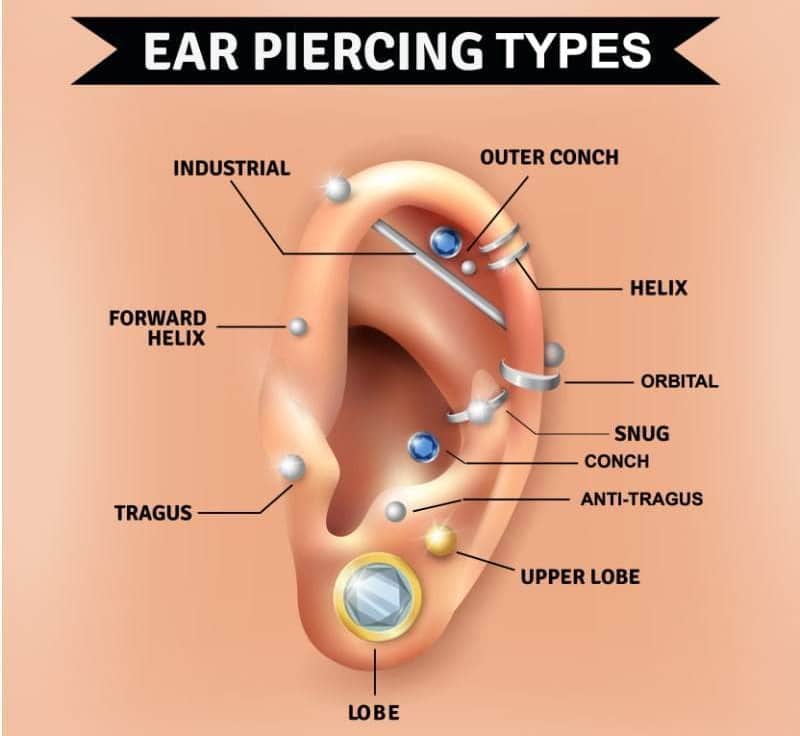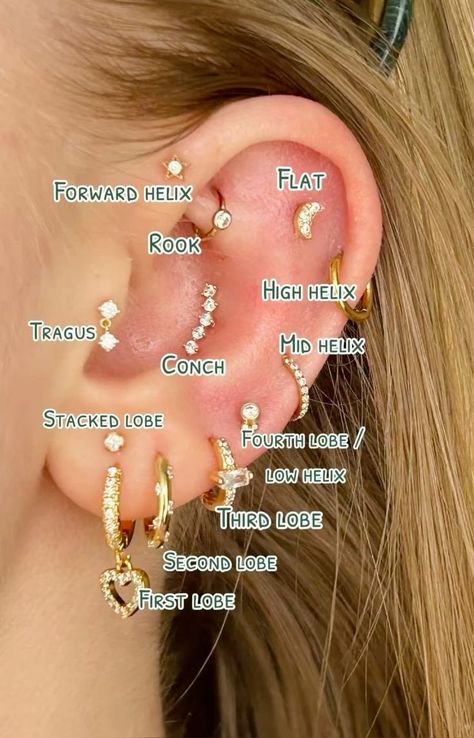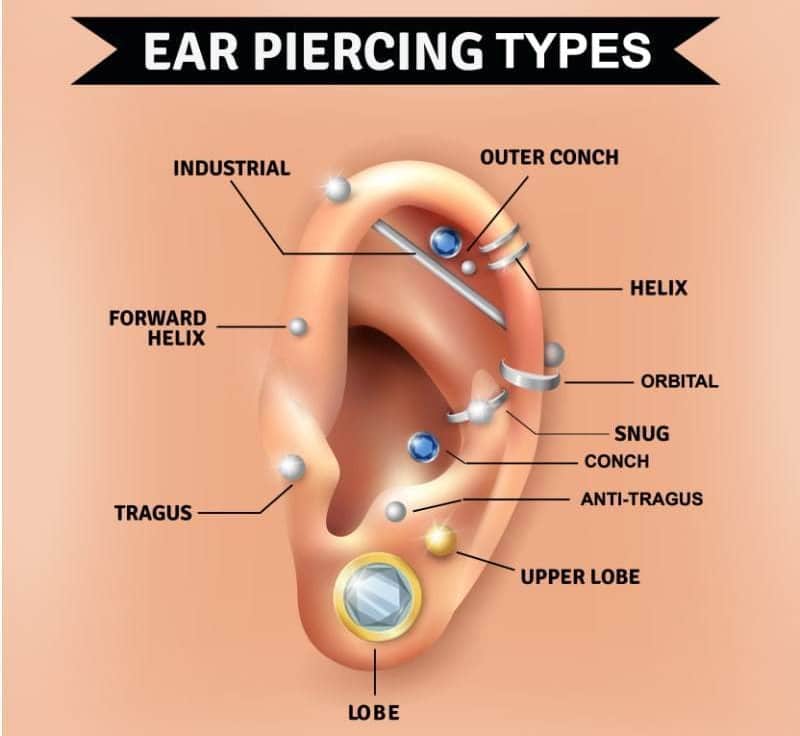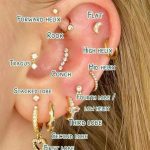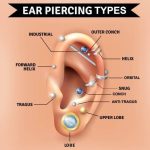Inner vs Outer Conch Piercing – Which One Suits You Best?
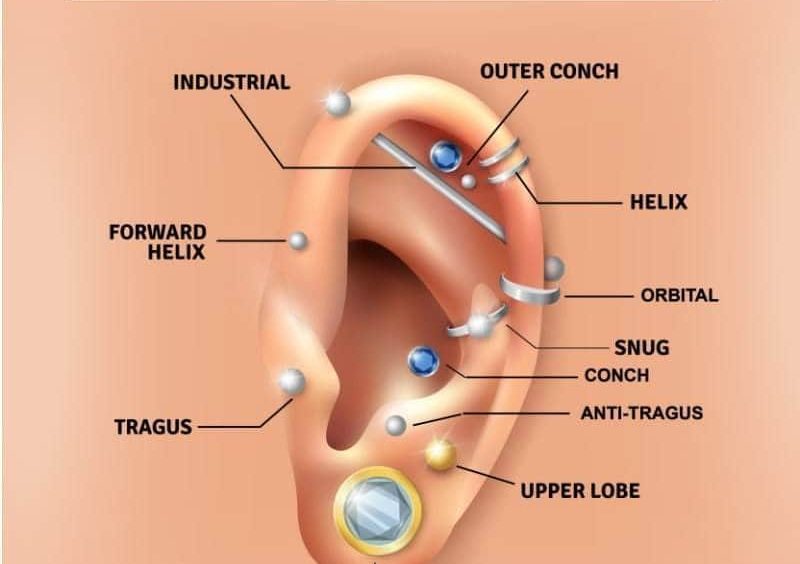
INTRODUCTION
If you’re thinking about upgrading your ear game, the Inner vs Outer Conch Piercing debate might have already crossed your mind. The Inner vs Outer Conch Piercing comparison is essential for anyone looking to express their personality through unique ear piercings. Both options are trendy, stylish, and versatile, but understanding their differences helps you choose the one that fits your look and comfort level best.
Understanding the Conch Piercing
A conch piercing is located in the middle section of your ear’s cartilage, the “conch” area that resembles a seashell. It comes in two main types: inner conch piercing and outer conch piercing.
The inner conch is placed through the middle cartilage, close to the ear canal. The outer conch, on the other hand, sits on the outer edge of the ear’s flat surface. Both are done on cartilage, so the procedure requires skill and care.
What Is an Inner Conch Piercing?
An inner conch piercing passes directly through the center of the ear’s cartilage. This piercing is perfect for people who prefer a subtle yet bold statement. Because it sits close to the ear canal, it can be paired beautifully with studs, small hoops, or rare jewelry that complements your overall style.
The inner conch offers a clean, refined appearance. It’s ideal if you want something elegant but noticeable. Since this area has thicker cartilage, expect a sharper pinch during the piercing process.
What Is an Outer Conch Piercing?
The outer conch piercing is positioned on the outer flat section of your ear between the helix and antihelix. This type of piercing gives you more space to play with larger jewelry, especially hoops that encircle the ear.
If you love bold looks or multiple ear piercings, the outer conch is a perfect choice. It allows creative combinations with helix, tragus, or lobe piercings. Many people choose the outer conch for its stylish appeal and ability to make the ear look fuller.

Pain Level: Inner vs Outer Conch Piercing
Both inner and outer conch piercings involve cartilage, so some discomfort is expected. Generally, the pain level depends on your tolerance.
- Inner conch piercing pain: Feels like a sharp pinch, usually rated 6–7 out of 10.
- Outer conch piercing pain: Slightly less intense, around 5–6 out of 10.
The procedure is quick, and most people describe the pain as tolerable. The soreness usually fades within a few days if you follow proper aftercare.
Healing Time and Aftercare Tips
Healing a conch piercing takes patience. On average, it takes 6 to 12 months for full recovery. Here’s how to care for it:
- Clean the area twice daily with saline solution.
- Avoid touching or twisting the jewelry.
- Keep your hair and headphones away during healing.
- Never sleep directly on the pierced ear.
- Avoid swimming pools and cruel chemicals.
Following these steps helps reduce infection risk and promotes faster healing for both inner and outer conch piercings.
Jewelry Options for Each Piercing Type
Choosing the right jewelry enhances the look and comfort of your conch piercing.
For Inner Conch Piercing:
- Small studs and flat-back earrings look elegant.
- Crystal or gemstone studs add sparkle.
- Minimalist designs suit professional settings.
For Outer Conch Piercing:
- Hoops and rings are the most popular choice.
- Captive bead rings (CBRs) give a trendy vibe.
- You can mix with other piercings for a layered look.
Experimenting with different styles lets you express your creativity while staying comfortable.
Which One Suits You Best?
The choice between Inner vs Outer Piercing depends on your personality, lifestyle, and pain tolerance.
- Choose Inner ear Piercing if you want a subtle and cultured look that complements any outfit.
- Choose Outer ear Piercing if you prefer a bold and stylish appearance that draws attention.
If you love collecting jewelry, the outer conch offers more flexibility. But if you want a sleek, minimal aesthetic, the inner conch is ideal.
Combination Piercings for a Unique Look
Many piercing lovers combine both inner and outer ear piercings for an amazing layered effect. This combo allows mixing hoops, studs, and other ear jewelry creatively. However, it’s best to get them done separately, allowing one to heal before adding another to avoid irritation.
Cost of Conch Piercings
The cost varies depending on location, studio reputation, and jewelry type. Generally:
- Inner ear piercing
- Outer ear piercing
High-quality jewelry may increase the total cost, but investing in good materials like titanium or surgical steel ensures safety and long-lasting results.
Possible Risks and Precautions
All piercings come with minor risks. The most common include swelling, redness, or slight bleeding. To stay safe:
- Always choose a professional piercer with sterilized equipment.
- Avoid cheap jewelry that causes allergic reactions.
- Follow aftercare instructions strictly.
If you notice prolonged pain, pus, or swelling, consult a piercing expert or healthcare professional immediately.
Trendy Styles and Inspiration
Celebrities and influencers have made conch piercings a fashion statement. You can style your inner conch with a rare jewel or your outer conch with elegant hoops. Pairing it with helix or tragus piercings creates a balanced ear selection look that’s chic and modern.
Final Thoughts
The Inner vs Outer Conch Piercing debate is all about self-expression and personal comfort. Both styles have unique charm and beauty.
If you want a graceful, go for the inner conch. If you love standing out with bold extras, the outer conch is your match. Whichever you choose, ensure proper aftercare and professional piercing for the best experience.
Key Takeaway
The ear piercing is more than a fashion trend; it’s a reflection of individuality. Understanding the difference between the Inner vs Outer ear Piercing helps you make a confident choice that suits your personality, style, and comfort perfectly.
FOR MORE INFORMATION: Bloggingshub.com


